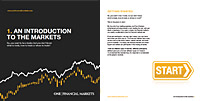

Asia FX Takes Little Relief From Post-CPI Risk Rally
By Ambar Warrick
Investing.com-- Most Asian currencies fell on Friday and were set to end the week lower as hotter-than-expected U.S. inflation drove up fears of more hawkish interest rate hikes by the Federal Reserve in the coming months.
The Japanese yen fell 0.1%, and was one of the worst performers this week, down 1.5% in its ninth consecutive week of losses. The currency slumped to its weakest level in 32 years on Thursday, crossing the 147 mark to the dollar.
A growing rift between local and U.S. interest rates has weighed heavily on the yen this year, with the Bank of Japan so far remaining reluctant to raise interest rates.
China’s yuan fell 0.1% after data showed CPI inflation rose to its highest level since April 2020, as stimulus measures and holiday spending boosted prices. But PPI inflation contracted in September, reflecting continued weakness in China’s COVID-struck manufacturing sector this year.
Fears of more Chinese COVID lockdowns grew this week amid new outbreaks in financial capital Shanghai. The yuan was set to lose about 1% for the week.
Broader Asian currencies moved little, taking no relief from weakness in the dollar. The Indian rupee was muted near record lows, while the South Korean won rose 0.4% from a 13-year low.
The greenback fell 0.7% on Thursday, even as data showed that U.S. CPI inflation grew more than expected in September.
While the reading is expected to invite more sharp interest rate hikes by the Federal Reserve, it also saw traders ramping up bets that the worst of the inflationary shocks for the U.S. economy had now passed. This spurred big gains in equity markets and most other risk-driven assets.
The dollar index steadied around 112.3 on Friday, as did dollar index futures. But after Thursday’s losses, the greenback was set to lose about 0.4% for the week.
Still, Asian currencies took few cues from Thursday’s risk rally, given that the Fed has signaled it will keep raising interest rates sharply in the near-term. Markets are now pricing in a nearly 100% probability that the central bank will hike rates by 75 basis points in November.
Bucking the trend on Friday, the Singapore dollar rose 0.6% after data showed the country’s economy grew much more than expected in the third quarter, shrugging off headwinds from slowing manufacturing and rising inflation.
The Monetary Authority of Singapore also tightened monetary policy, as it moves to contain inflationary pressures in the country.
Gains in industrial metal prices supported the Australian dollar, which rose 0.6%.
Begin trading today! Create an account by completing our form
Privacy Notice
At One Financial Markets we are committed to safeguarding your privacy.
Please see our Privacy Policy for details about what information is collected from you and why it is collected. We do not sell your information or use it other than as described in the Policy.
Please note that it is in our legitimate business interest to send you certain marketing emails from time to time. However, if you would prefer not to receive these you can opt-out by ticking the box below.
Alternatively, you can use the unsubscribe link at the bottom of the Demo account confirmation email or any subsequent emails we send.
By completing the form and downloading the platform you agree with the use of your personal information as detailed in the Policy.






